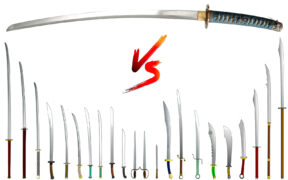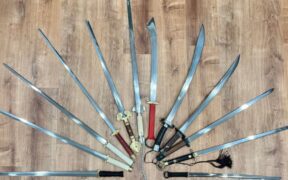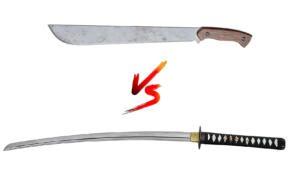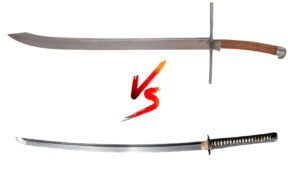Miao Dao vs Katana: Differences, History, and Combat
NO AI USED This Article has been written and edited by our team with no help of the AI
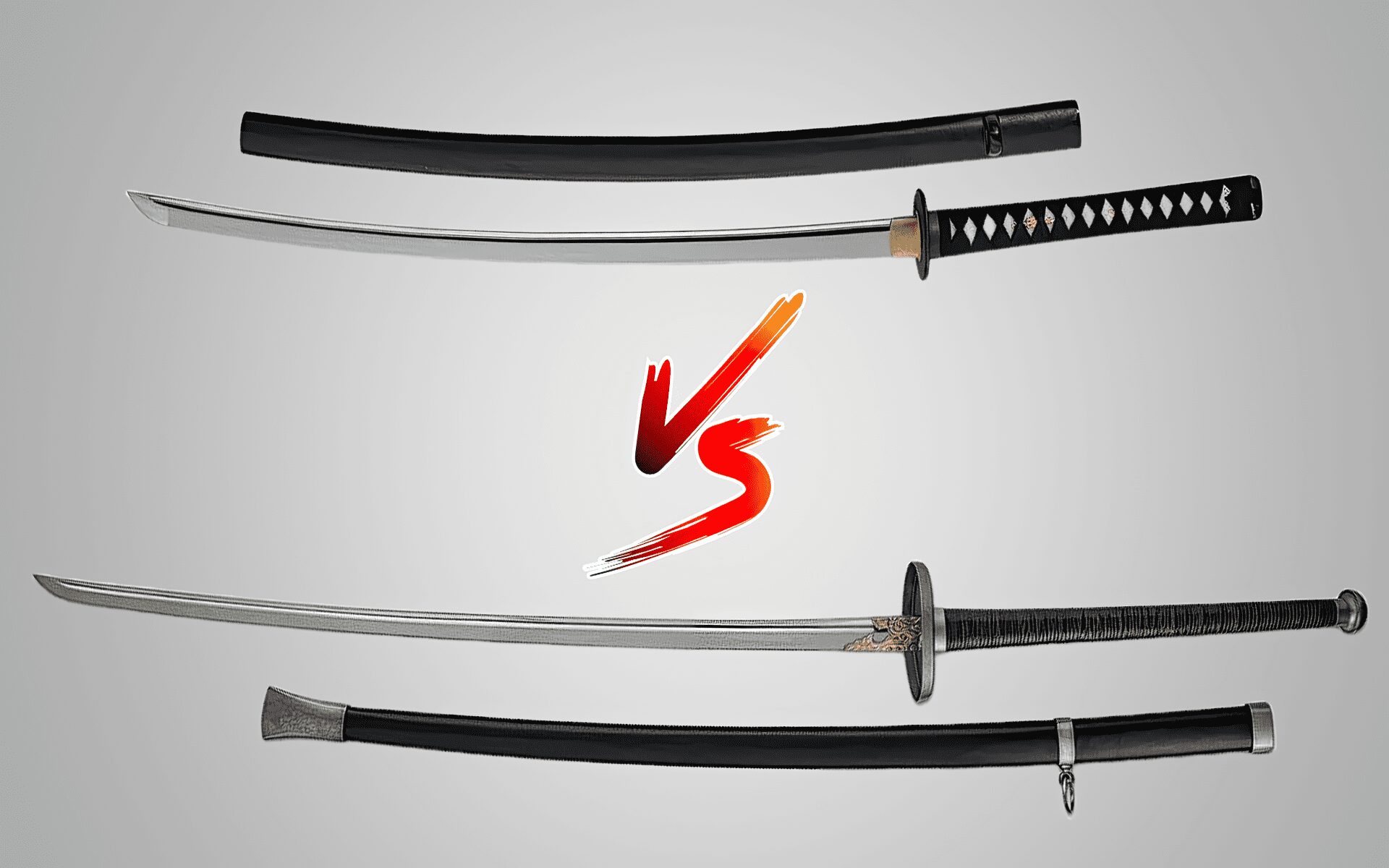
The miao dao and katana are the most popular historical Chinese and Japanese sword types. These blades each have unique strengths and weaknesses, which raise much debate about which sword might have the upper hand in a direct one-on-one combat situation.
In this article, we will compare the miao dao and the katana by first looking at their differences and what makes them stand apart. We will explain their historical significance and conclude the article with which sword we believe would be the victor in a combat duel.
Characteristic and Design Differences
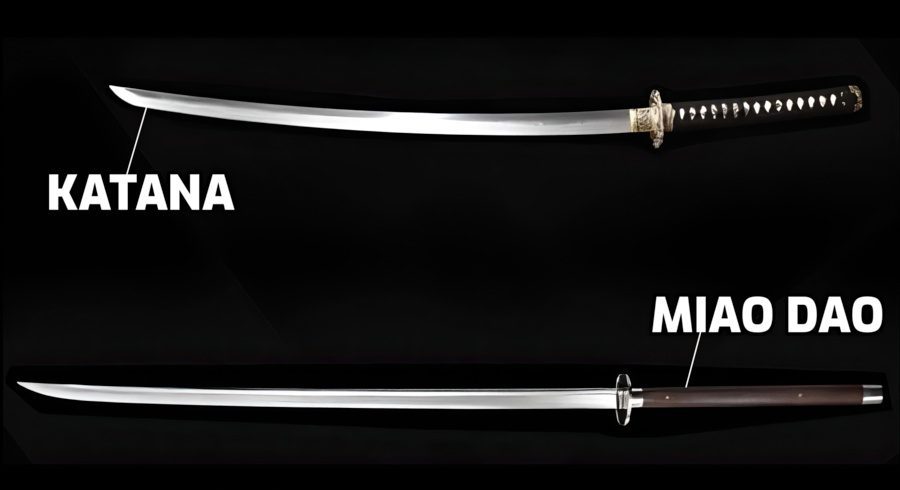
The Chinese miao dao and Japanese katana may seem similar, but each has distinct features. The most significant differences are length, blade feature, handle, handguard design, and the curve level on the blade.
Blade
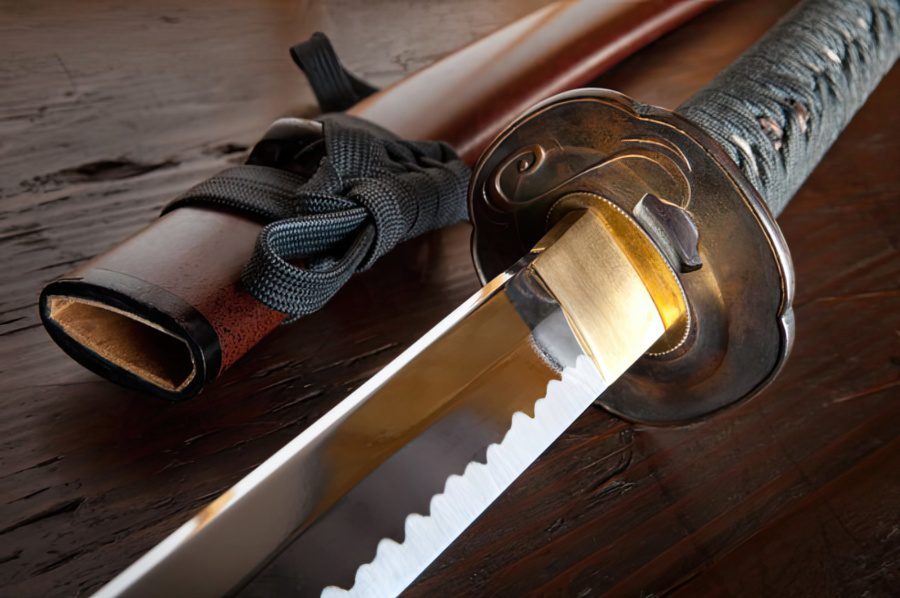
The blade of the miao dao is much longer than that of the katana, with a softer curve that resembles a straight single-edged blade. Its blade can be broader than the katana’s or thicker around the hilt, gradually becoming thinner near the tip. The blade’s balance is at the center or near the tip to increase the impact behind powerful cutting attacks.
The stronger curve of the katana’s tamahagane steel blade is made by folding, which results in unique blade grain patterns. The balance is generally near the tip, but the force of impact is with slicing attacks as opposed to the cutting attacks of the miao dao. The blade of a katana generally has the same thickness throughout its entire blade profile.
The miao dao and katana each feature a groove meant to lighten the weight of the swords. Katana blades, however, feature a hamon (blade pattern) from the clay-tempering process when differentially hardening its blade.







Hilt
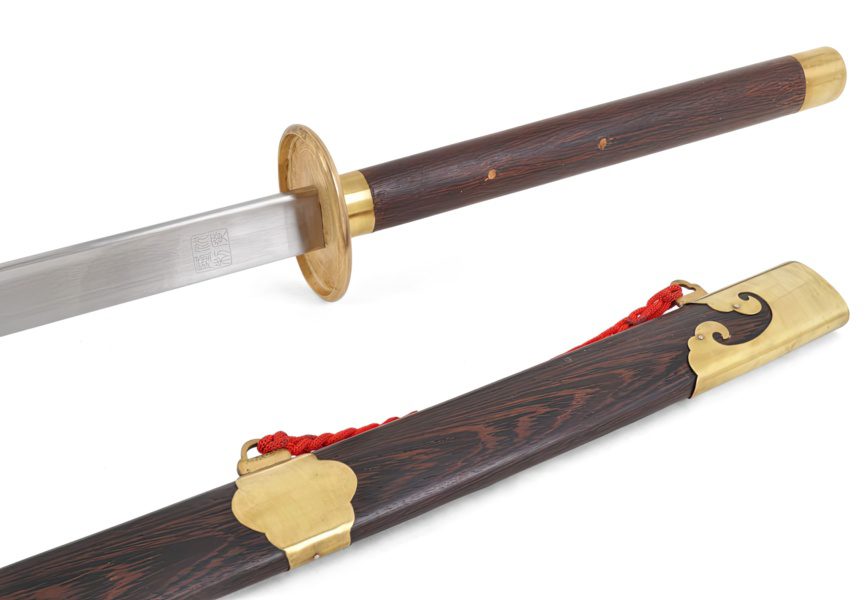
The hilt of the miao dao is generally much longer in design than the katana’s. It has a very light curve, starting from the pommel and ending at the handguard. It can be a simple wooden core or wrapped with a cord for a firmer grip. Miao dao pommels can be larger than the katana’s, allowing for better weight balance and the ability to overextend while slashing. The handguard of the miao dao is the traditional thicker Chinese cup guard, which can be heavier for added balance.
Katana guards and handles are shorter, with a much stronger curve. The wooden core is traditionally wrapped with a silk, cotton, or leather ito (handle wrap) in smaller diamond patterns that allow for stable control. Its pommels and handle are the same width, and the guards are smaller and lighter.
Size and Weight
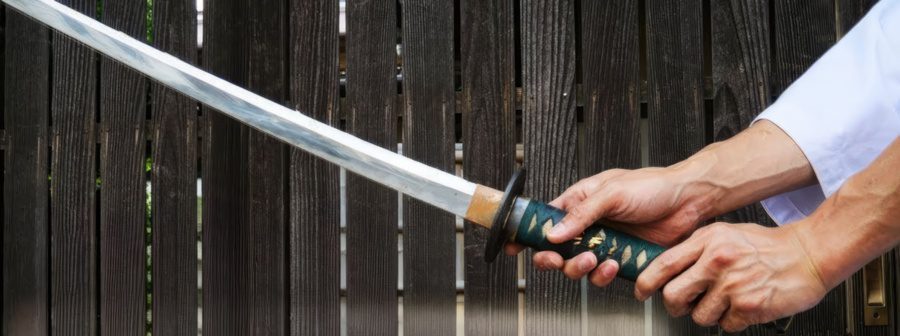
The biggest difference between the Japanese katana and Chinese miao dao is size and weight. The traditional samurai katana sword was around 39 inches (99 cm) long and weighed between 1.9 and 2.6 lbs (0.9 to 1.2 kg).
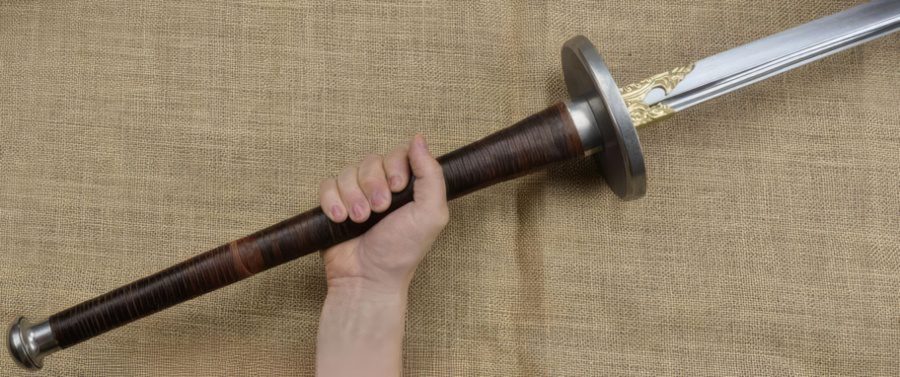
The Chinese miao dao was developed as a much larger weapon. It is longer than the katana, having a length of 47.2 to 55.1 inches (120 to 140 cm) and a weight of 2.4 to 3 lbs (1.1 to 1.4 kg).
Historical Significance
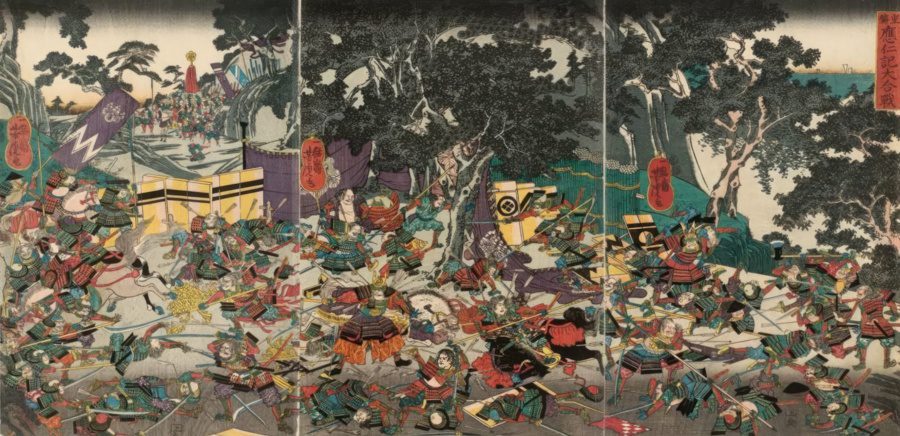
The katana was an edged weapon used by the legendary samurai of Japan that appeared during the Muromachi period (1336-1537). It was a two-handed weapon versatile enough to be used in almost any type of situation, whether a large battlefield formation or mounted on horseback.
The katana’s versatility and ability to be unsheathed quickly made it a favorite for many samurai. Its significance rocketed during the peaceful Edo period (1603-1868) when it was studied in kenjutsu (Japanese sword martial arts) due to its superb handling and blade edge alignment.
The miao dao is a newer blade, surfacing during the beginning of the 20th century in Republican China (1912-1949). The blade was based on the larger traditional chang dao in the group of wo dao Japanese-inspired blades that originated during the Ming Dynasty (1368-1644) with General Qi Jiguang. It was a sizable chopper made to defend against multiple armored enemies and mounted foes controlled by the Wokou pirates.
The sword allows for agile movements, but sacrifices speed due to its bigger mass and impact behind each strike. It acts more as a two-handed sword, whereas the katana can be used with a single hand.
Miao Dao vs Katana in Battle
The katana and miao dao are very different weapons. The katana is a versatile sword that can be used as a primary and secondary weapon, whereas the miao dao is a primary two-handed-edged weapon of war. The katana is designed for precise maneuvers, allowing its wielders to deliver a deadly cut in under half a second.
While both are superb weapons in their own right, when faced with a one-on-one duel without any armor, the miao dao would be the victor. The determining factor between these weapons is length and reach advantage, with the Chinese miao dao having the same weight.
The miao dao has a lighter curve and a strong tapered tip with a false edge that can be utilized for attacks. Its handle is more significant, with a gap between the hands, allowing for extra attacks or defense positions.
